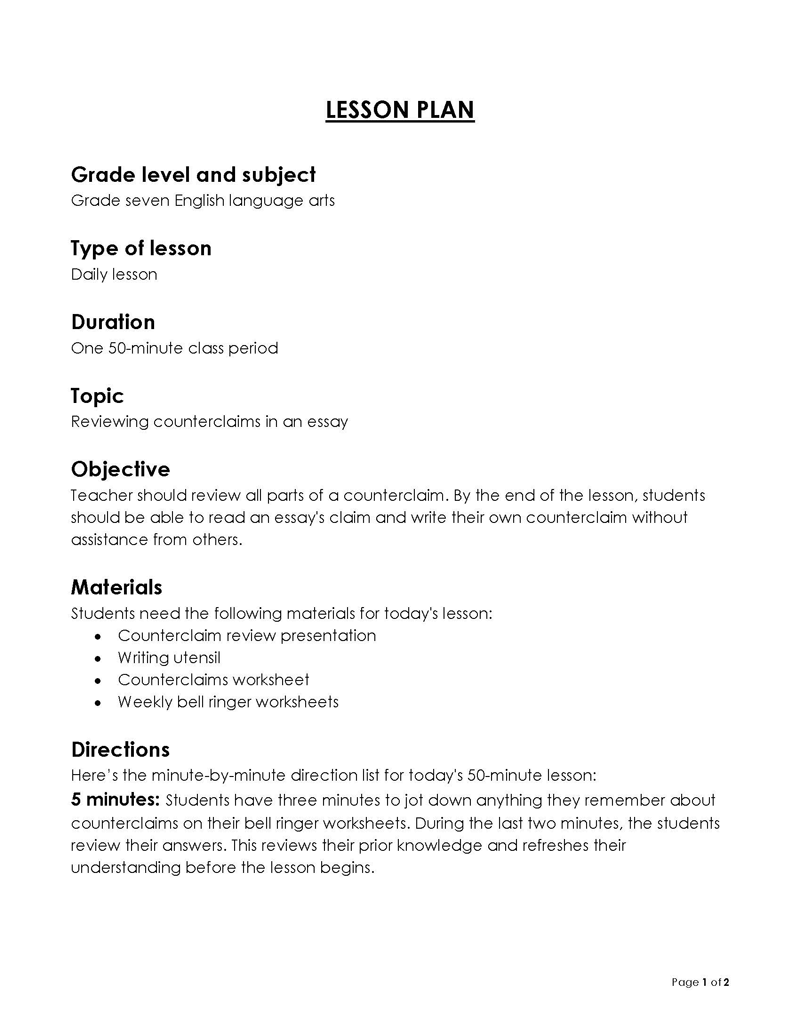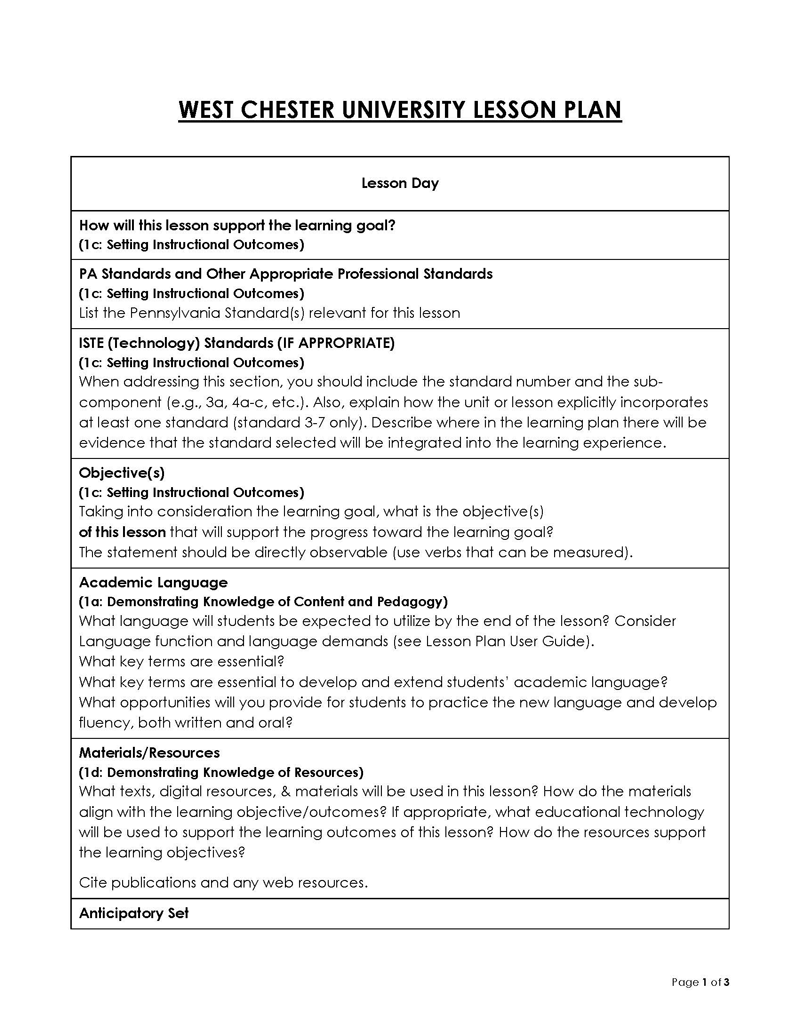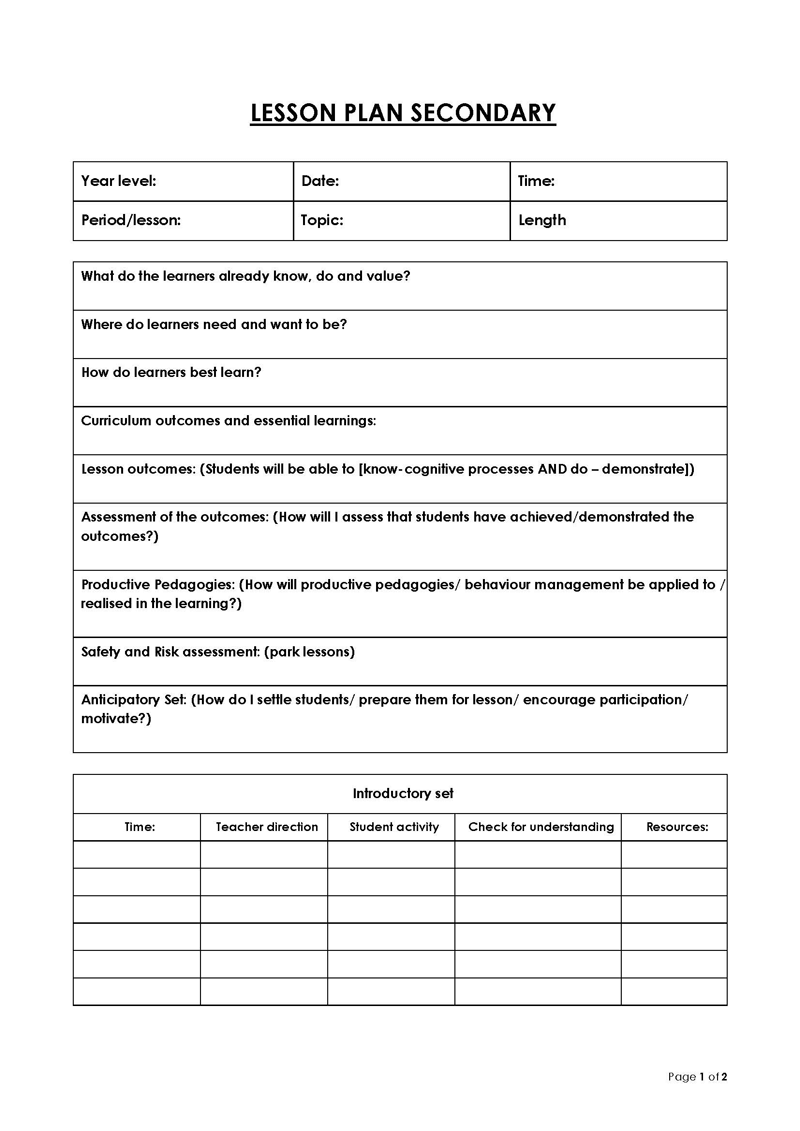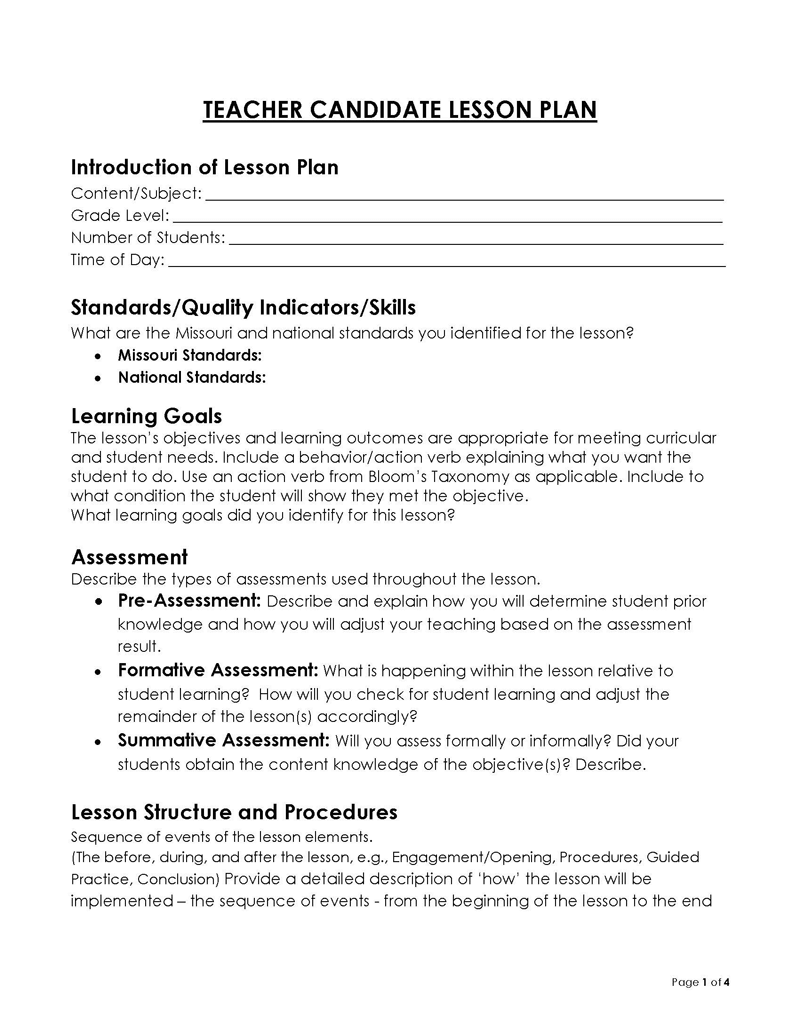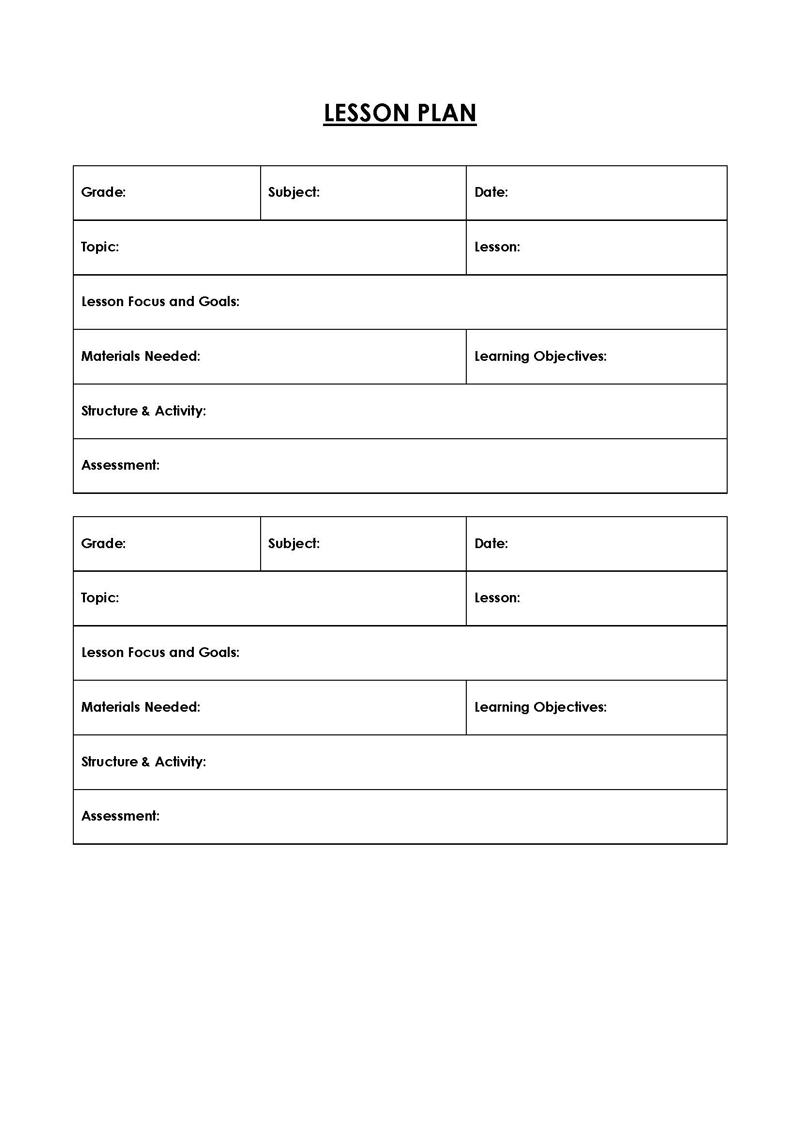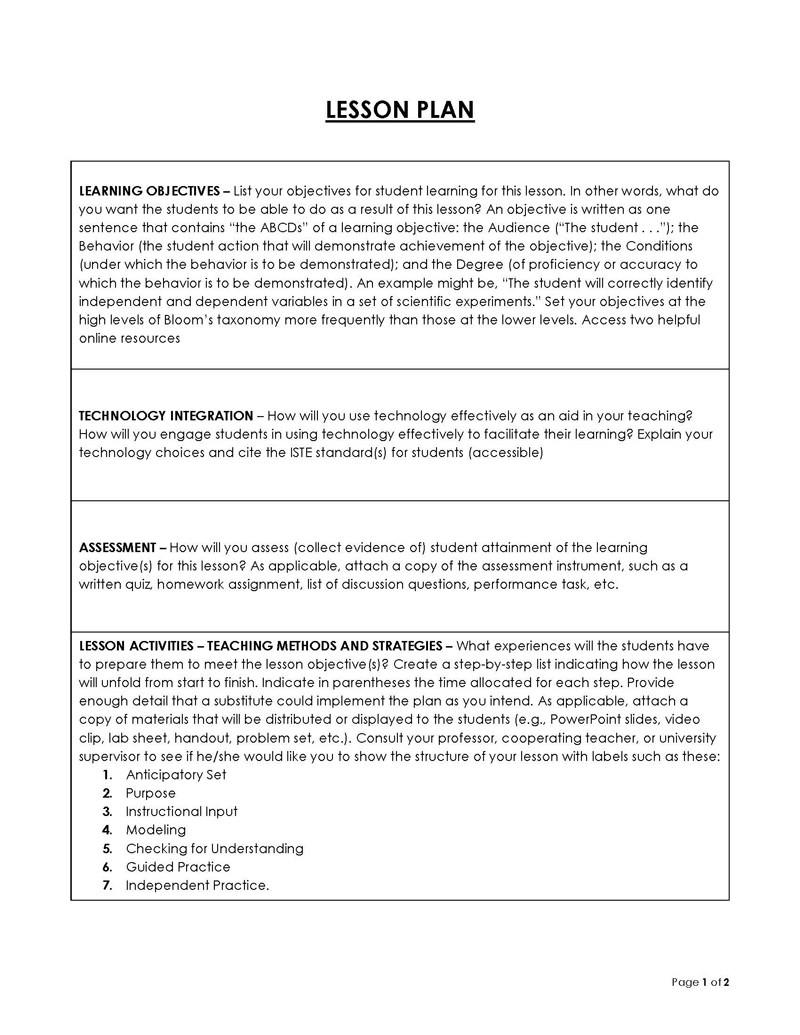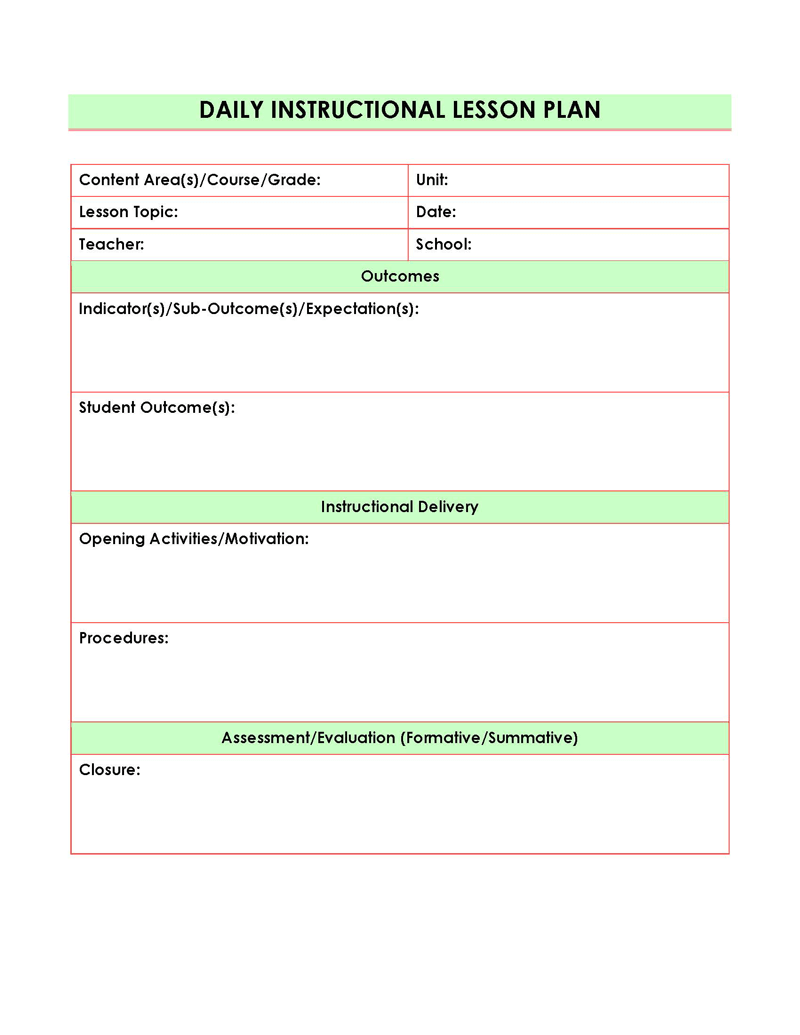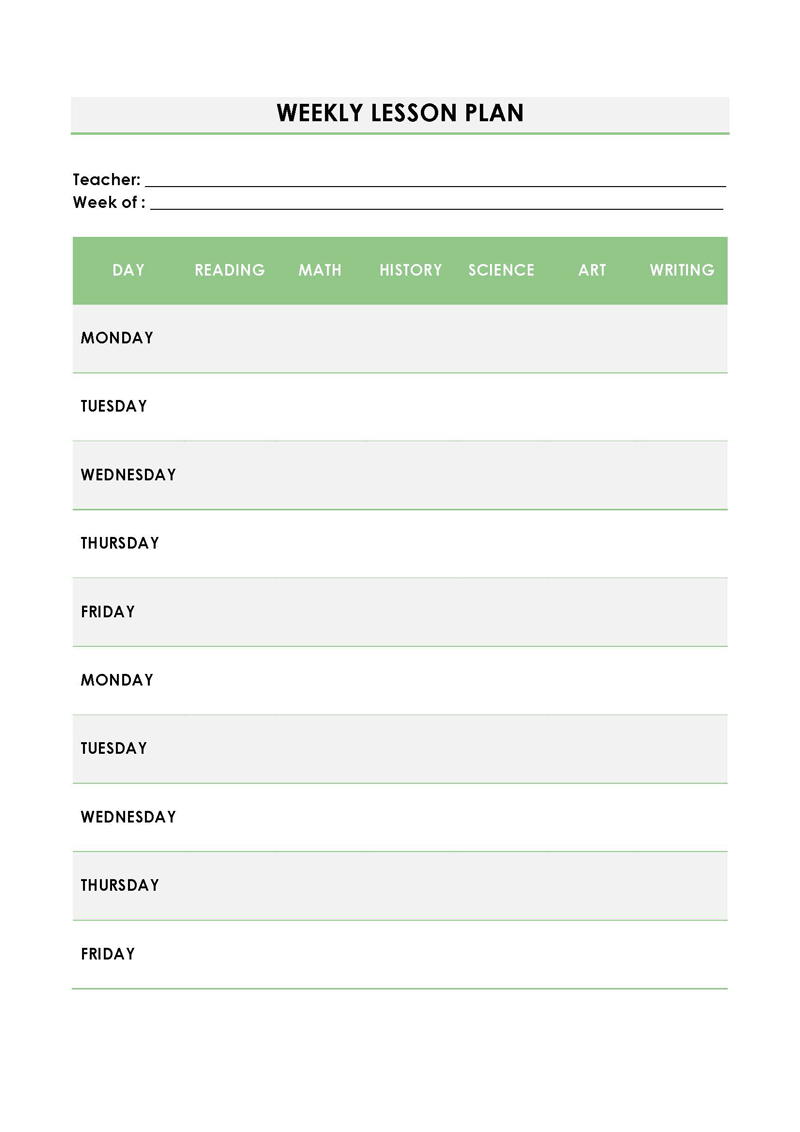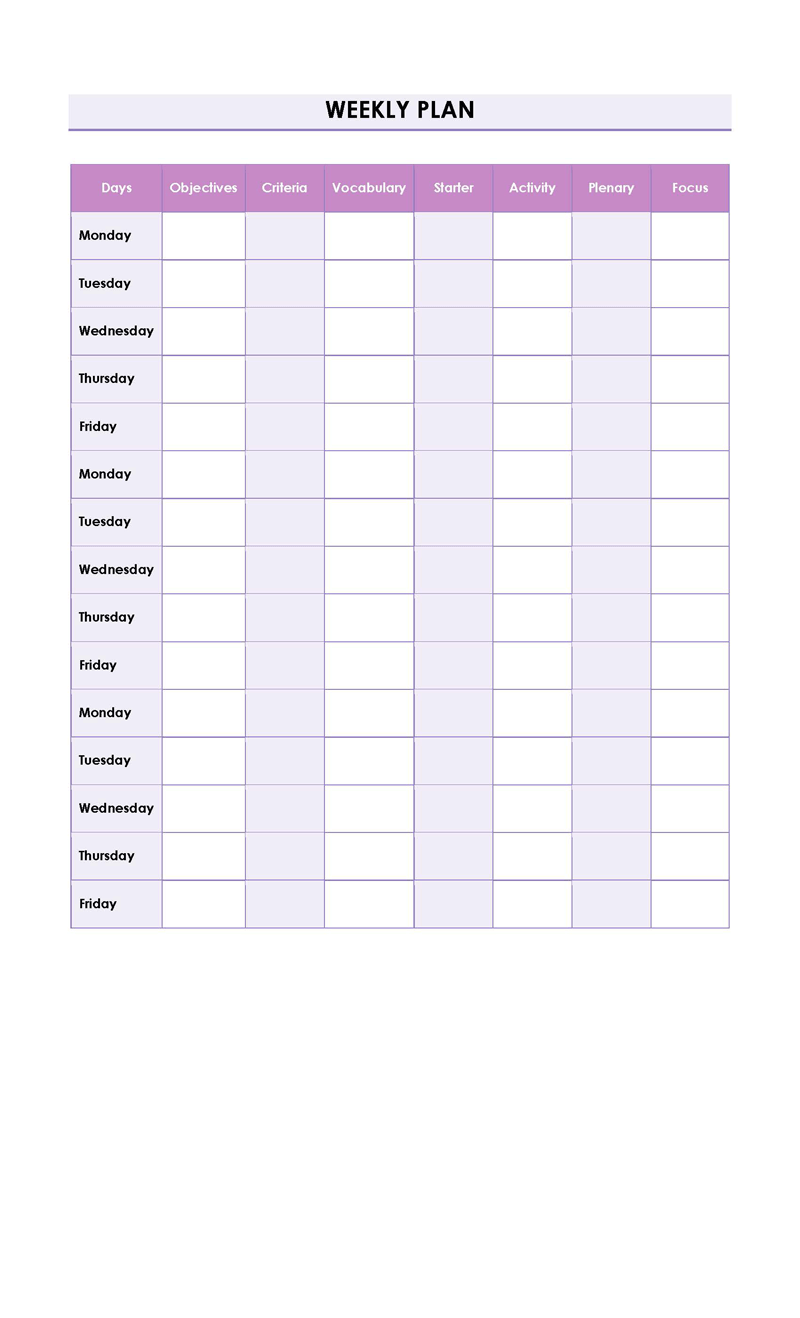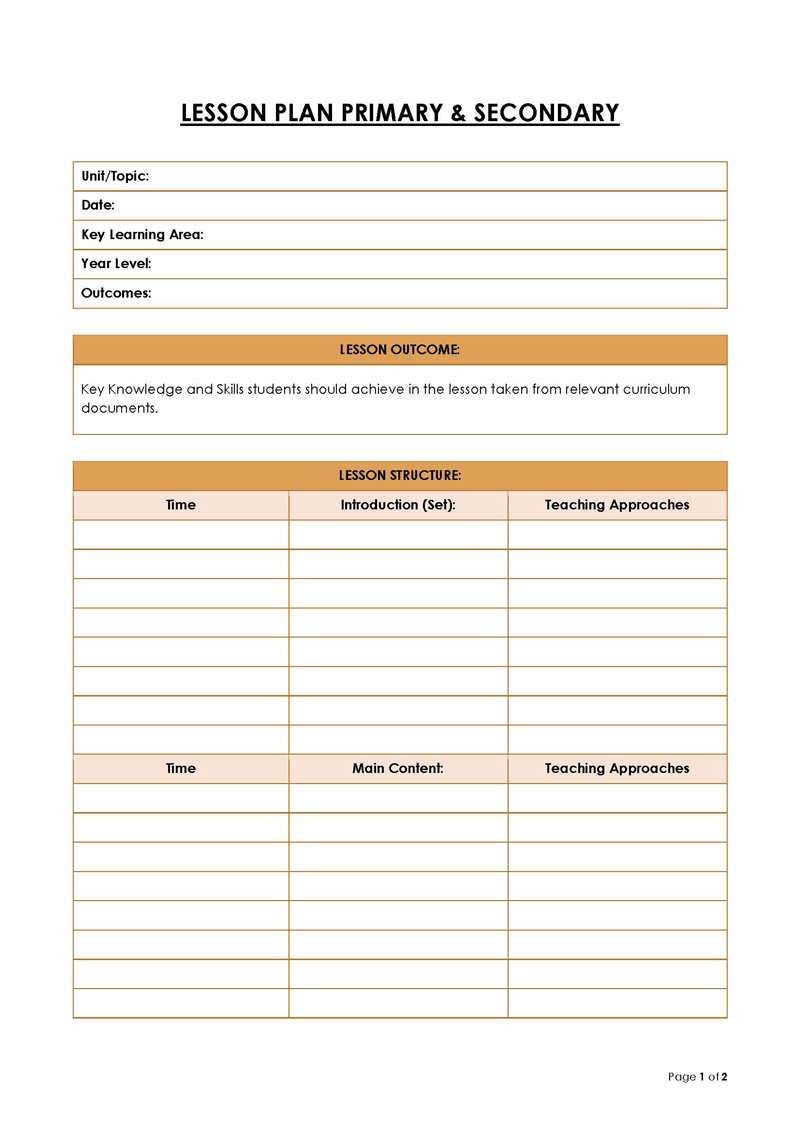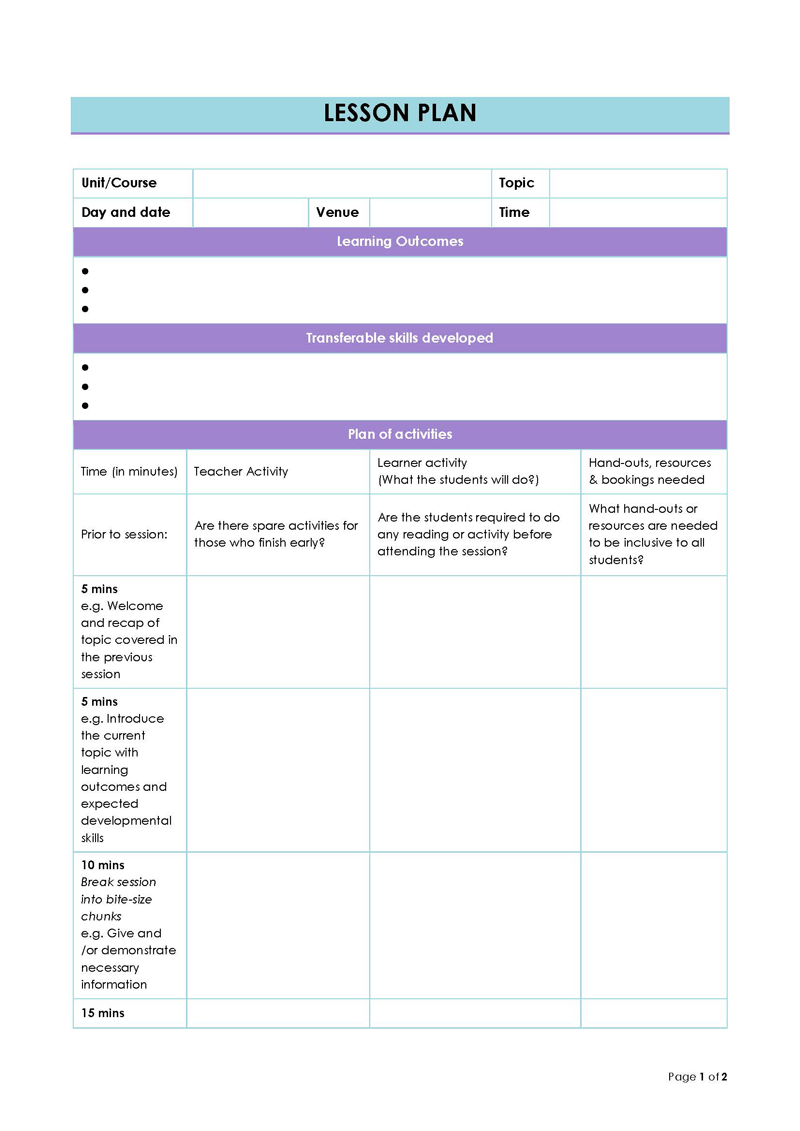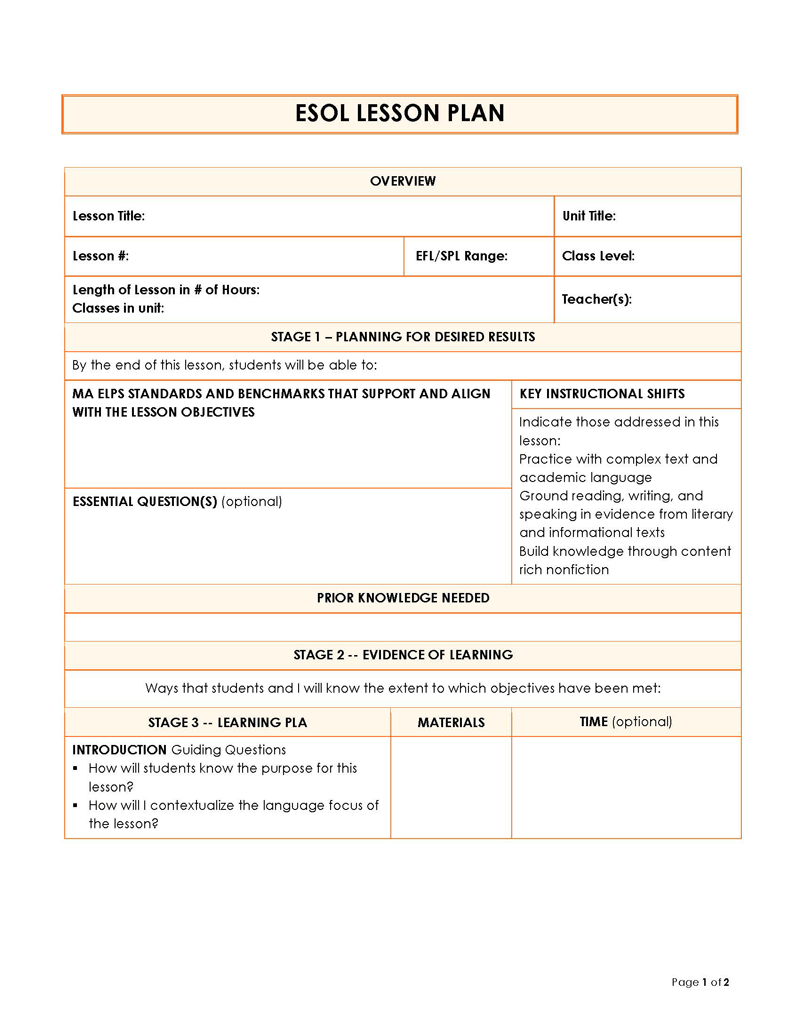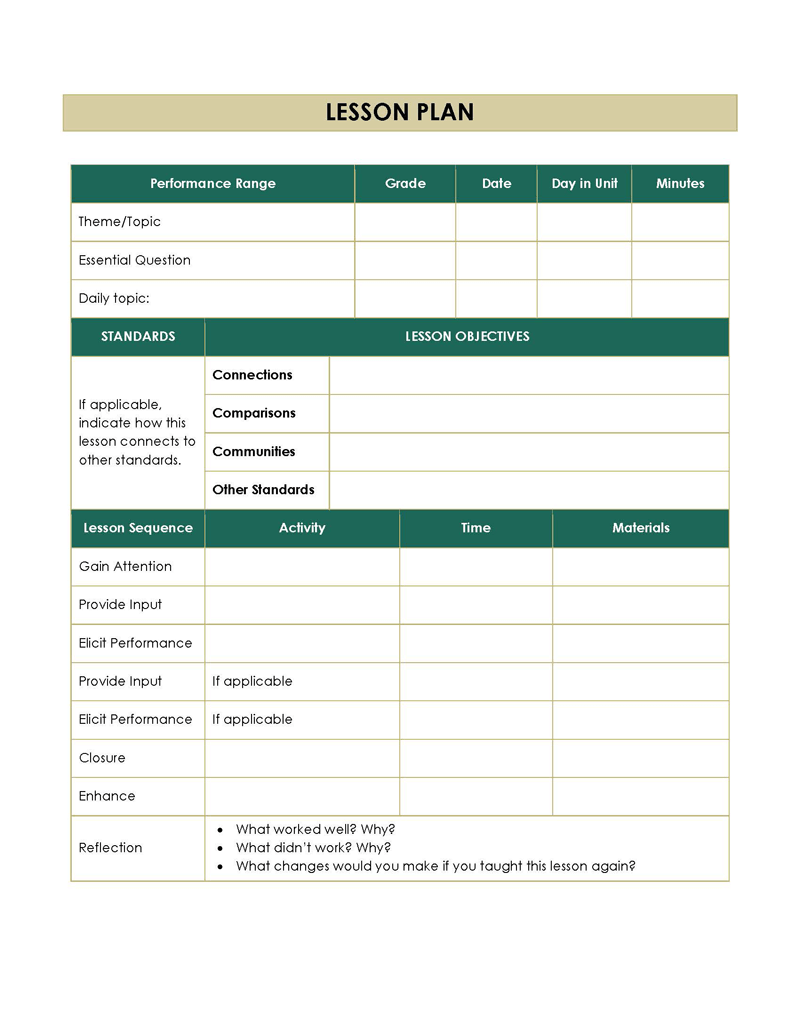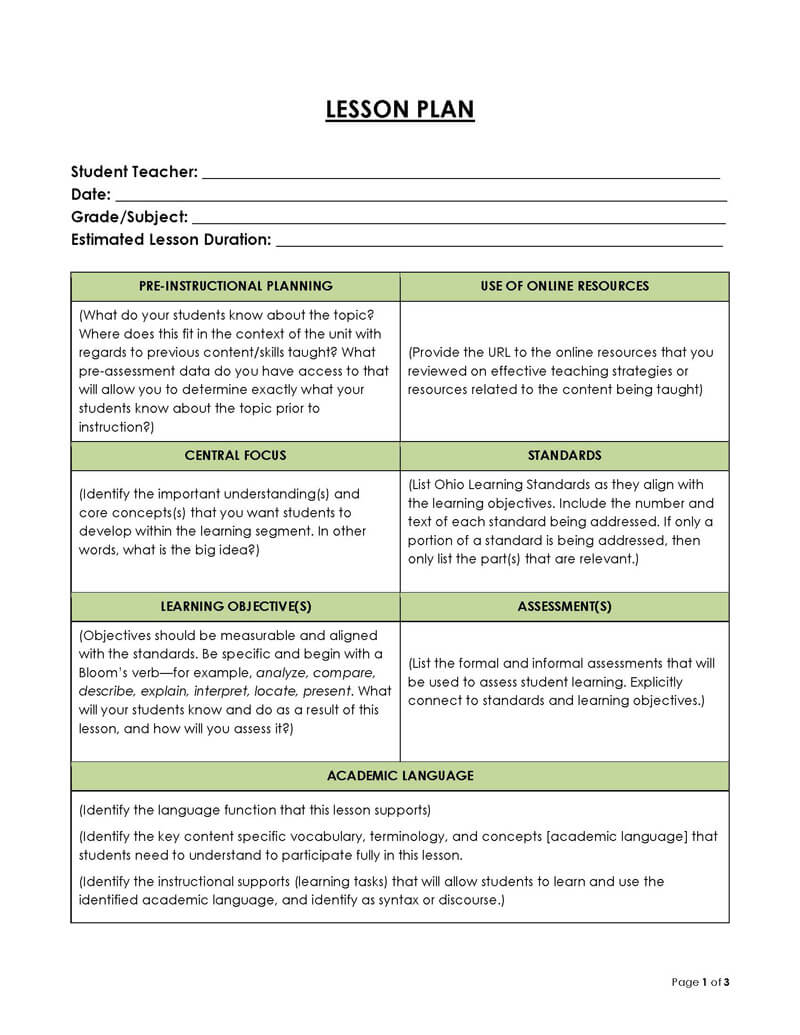One of the main aims of teaching is to ensure students understand what is taught to them and retain the knowledge. At the beginning of an academic session, it is necessary to have a plan to guide you through the tasks for the day, week, unit, or even year.
A lesson plan is a schedule of daily, weekly, and other periodic activities a teacher hopes to complete.
It helps the teacher set objectives, prepare learning materials and set a target for a specific period. It should contain simple pointers on the content to guide them through the lessons.
This article discusses how a lesson plan template is helpful for educators as it provides a structured guide to effectively organize and deliver engaging lessons, enhancing the learning experience for students.
Lesson Plan Templates
A lesson plan should help you achieve your teaching objectives. Whether new to teaching or experienced, you can always use a guide to help you make an effective lesson plan. Templates can guide you in understanding what you need to include in an effective lesson plan.
Therefore, we provide free downloadable and easily customizable templates:
What is a Lesson Plan?
A lesson plan outlines the day’s learning activities. Teachers use it to organize and allocate time, resources, and activities to achieve the day’s learning objective. It keeps the teacher on track with the intended activities, helps them understand and cater to their student’s educational needs, and provides a framework to assess them.
Importance of Making a Lesson Plan
Having teaching goals in mind is good when preparing a lesson plan. Goals help you understand how to allocate your time and resources to serve your students best. Lesson plans benefit both students and teachers; they enhance communication on what is expected of teachers and pupils, enable students to complete their assignments on time, and help the teacher provide a good learning experience for the students.
Among other reasons, it is vital because:
It helps build personal confidence
Personal confidence is crucial when conducting a lesson. It helps you prepare for the lesson beforehand, making you confident when presenting the topic in class.
Makes you organized
It helps you organize your work and time. Each activity is slotted at the correct time, allowing you to create a good learning flow for the students. Being organized enables the students to follow the lessons daily and stay on track with the content of each lesson. It also helps the teacher track and assesses assignments and projects. On the other hand, a lack of order may cause the teacher to fall behind the teaching schedule and the students to misbehave.
Evaluates your lessons
Teaching improves with experience; a good lesson plan allows you to evaluate your performance. With it, teachers can assess whether they have achieved their objective and need to adjust their methods to make learning more efficient.
Acts as a guide for substitute teaches
Substitute teachers can use it to help you achieve your goals if you get sick or incapacitated. They can use it to pick up where you stopped and avoid disturbing the lesson flow as envisioned.
Types of Lesson Plan
There are different lesson plans you can prepare depending on your objective, subject matter, and duration of the plan.
These include:
Daily lesson plan
A daily lesson plan states the activities scheduled for the day. In addition, it states the time scheduled for the lesson and the content and assesses to see if the students have understood the content and if the teacher has achieved the day’s objective. Therefore, there should be a daily plan for each day of the week.
Weekly lesson plan
It is a schedule for activities that will be conducted for the week. A typical weekly plan provides a lesson to be taught at the beginning of the week and provides students with a schedule to learn the content during the week. Then, at the end of the week, they are assessed on what has been taught.
Unit lesson plan
It contains the content for an entire unit; as such, they cover more content than other lesson plans. It discusses the time the unit will be taught and allocates when each topic and sub-topic will be conducted. It also shows the assessment method and provides timelines for completing assignments and exams, if any.
Content area lesson plan
Teachers who teach different subjects simultaneously use a content area lesson plan. Each topic and subject have its lesson plan. For example, a teacher teaching science and mathematics in the same class must have a lesson plan for each subject. In addition, the teacher may choose to prepare a daily, weekly, or unit lesson plan for each subject.
Grade level lesson plan
Some teachers may have more than one class on different levels; in such instances, the teacher may prepare a lesson plan for each grade. The unit might be the same, but the content varies by grade.
Detailed lesson plan
It outlines the teacher’s and student’s objectives. It covers all the content necessary to teach a lesson.
Semi-detailed lesson plan
It contains general pointers on what should be taught for the day. It includes enough information to complete the lesson, but the teacher has extra room to add or subtract content.
Understanding by design
In understanding by design (UbD), the teacher first sets the expected outcomes of the lesson and works backward to create an outline to help the students achieve the desired results.
Factors to Pre-Consider
Before preparing a lesson plan, teachers should consider different aspects of learning and incorporate them into the lesson plan.
Some of these factors are:
Who your students are
Understand your students by assessing their learning abilities, ages, backgrounds, and preferred learning styles. It is also essential to analyse whether they would work better in groups or independently. From the assessment, you can identify the different categories of students, from those with disabilities and poor concentration and motivated ones.
You should take note of special students and consider their needs when creating the lesson plan. Knowing your students can help you create a plan that will work effectively to help you achieve your goals.
What the students already know
Knowing what your students already know can help you limit the content you will include in your lesson plan. You should also evaluate the number of students on this basis; a good lesson plan caters to the needs of all students, whether they know more or less than others.
Teaching techniques
Teaching techniques are essential to the teacher and the student. A good technique should balance the teacher’s comfort and preferences and the student’s needs. It should also keep the students engaged and allow the teacher to assess them at the end of the class. In addition, different techniques work for different age groups.
For example:
Younger students learn better from interactive activities like brainstorming and question and answer sessions; older students learn better with content-focused methods like lectures.
Elements of Lesson Plan
It should be comprehensive. It must incorporate the needs of the students, appropriate teaching techniques, and the desired outcome. It should accommodate the student’s needs and allow them to understand and retain knowledge.
Some of the elements include:
Grade level and subject
The grade level and subject should be included at the beginning of the lesson plan. Stating the grade and subject shows that the content will be used for a particular grade and a specific topic.
Scope
The scope of a lesson is the amount of content the teacher intends to teach within the period the lesson plan covers. The scope should indicate whether the content will be covered in a day or week.
Note: Most teachers use Bloom’s taxonomy to determine learning outcomes. Bloom’s taxonomy classifies learning into categories of difficulty, from the least to the most difficult. It states that one category of difficulty must be understood before progressing to the next. The categories are:
-Knowledge (cognitive domain)
-Attitude (affective domain)
-Skills (psychomotor domain)
Learning objectives
Once you know the content of your lesson plan, you should identify the learning objectives. What do you want the students to understand by the end of the lesson? The learning objectives should be beneficial to the students as they keep the students and teacher on track and what to expect from the lesson. Finally, the learning outcomes can be outlined in bullet points with a brief explanation of how they will manifest.
The topic for the day
The topic for the day is the content scheduled to be taught for the particular day. It is a section of the unit or subject that you hope to clear at the end of the lesson. Therefore, selecting the topic and outlining how much you will teach for the day is essential. Since content varies and some topics have more content than others, selecting a topic helps you focus on the day’s content.
For example:
The day’s topic for a science lesson can be the ‘classification of plants.’
Activities and tasks
Activities and tasks are the practical aspects of the lesson plan. These are the things you need to do or engage your students according to the course content, for example, discussions, group work, or video presentations on the day’s topic.
Enlist the required materials
Each activity, task, or subject has materials that should be used to achieve the desired learning outcomes. List the required materials in the lesson plan and arrange them before they can be used. They include books, printouts, and articles.
Set realistic time slots
Each lesson has a different level of intensity. Different concepts call for different timelines. When preparing a lesson plan, allocate realistic time slots for each idea according to its intensity and content. Simple activities or concepts should have less time compared to more complex ones.
Teaching directions
Directions are essential to help you stay organized during the lesson. They should be included to help you know when and how to end the lesson. These directions can be in the form of general instructions or detailed pointers for the lesson. You can consult the school’s administration policy to guide you on the preferred way of planning your directions.
Student’s practice
Students should be allowed to practice the new content they have learned. Practice will enable them to understand the content better and internalize the concepts. Some methods of student practice include:
Guided practice
Guided practice is used when the teacher revises the content with the students and allows them to give their input and explain how they have understood the content. It helps the teacher assess how much the students absorb the content.
Collaborative practice
Collaborative practice is needed when the teacher makes a group and assigns the students to work from the course content. Then, the students can discuss what they have understood and ask questions about what they have not.
Independent Practice
In independent practice, the teachers separate the students and let them work on their own. However, it is often done after collaborative practice to allow the students to review the topics themselves and identify whether they understood the content without peer influence.
Assessment
Assessments allow the teacher to evaluate how successfully they have achieved the lesson’s objective or whether the students understand the lesson’s topic. The teacher can ask for feedback in many ways, including using quizzes or posing general questions to the students on the topic.
Assignment
An assignment is a set of focused exercises given by the teacher. It aims to ensure the students understand and practice what has been taught in the class. In addition, it is given to ensure students apply the knowledge they have gained and retain it through practice.
Space for notes and feedback
Now that you have a detailed lesson plan, you should create a section where you can write students’ feedback and opinions about the lesson delivered. These notes help ensure teachers continually improve their skills and organization.
Effective Practices
A simple lesson plan will ensure you complete your lesson objectives. However, effective teaching requires more than simple planning; you can use the tips below to ensure your lesson plan covers the content, both for the students and yourself as the teacher:
Use various student interaction patterns
Learners enjoy interactive sessions. To ensure your methods are not monotonous, use different interactive patterns to keep your students engaged. For example, use independent and group sessions for revision to ensure students understand the content. You can assign partner groups depending on students’ needs and note students who perform better in groups, pairs, and independently.
Adapt multiple learning styles
Students have diverse learning styles; some are visual and auditory learners, and others learn better by writing. Use multiple learning styles to ensure there’s something for everyone and that no student is left out.
Warm the students with a game
Warming students helps them get into a mental learning space. In addition, games can assess the students’ understanding of the topic and prepare them for the lesson ahead.
Form a backup plan
The lesson plan should be adjustable, so you must prepare yourself for any outcome as a teacher. Always have an alternative in case the initial one fails for some reason. It should also allow you to flow with the student’s needs.
Over-plan the class
Over-panning entails allocating every minute of the lesson to an activity, whether teaching or guided practice. Therefore, you should be prepared if the students finish their tasks earlier than expected.
Bottom Line
A lesson plan should guide the teacher on teaching methods and content. On the other hand, it also guides students as it helps them stay on track with tasks and assignments. A proper lesson plan should help the teacher achieve the predicted learning outcomes while ensuring the students understand and retain the knowledge.
They are a helpful tool for teachers to stay organized even when the lesson has to be taught by a substitute teacher. In addition, it provides an excellent and inclusive teaching experience for the teacher.
